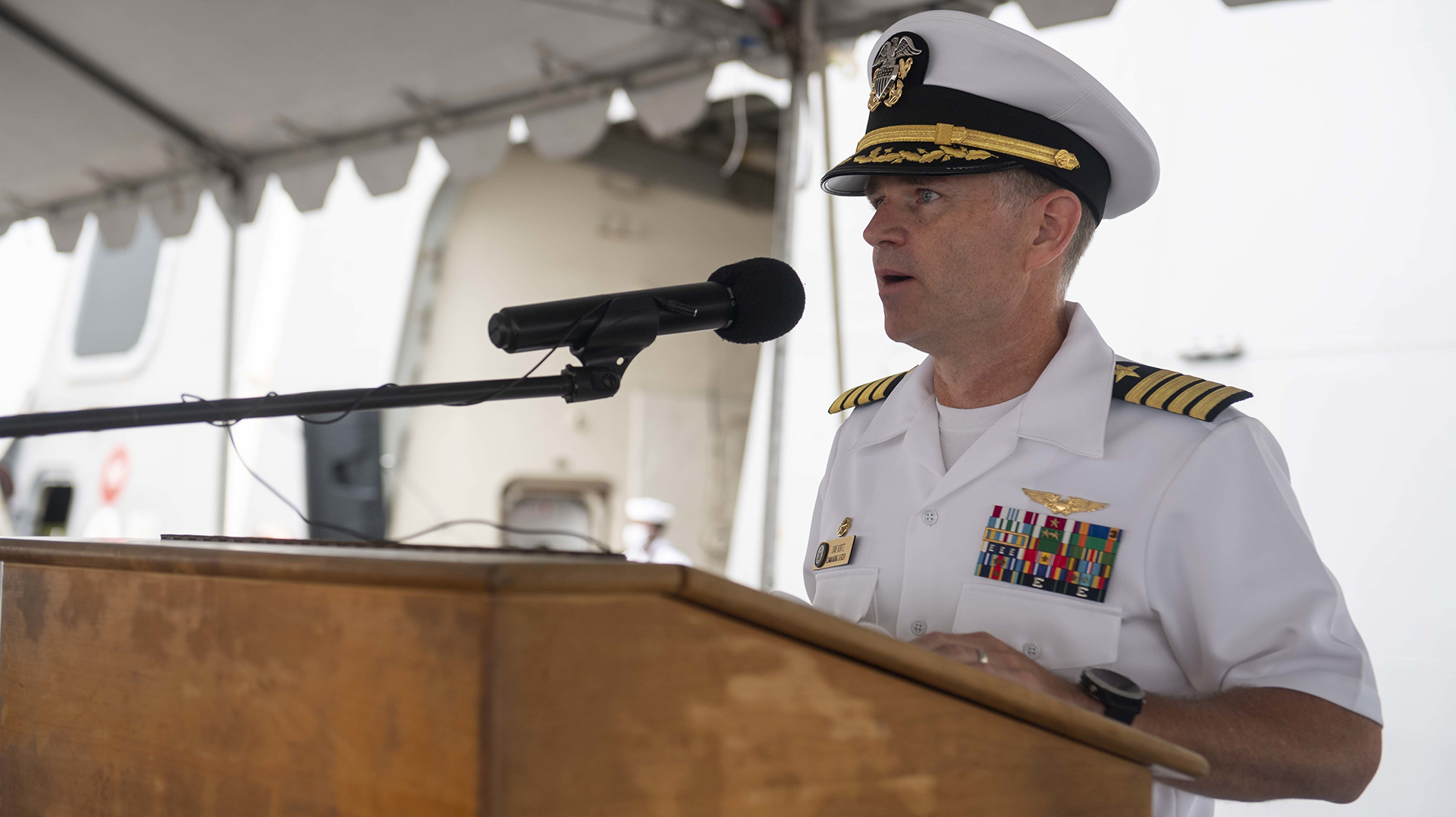

The former Navy commanding officer of the amphibious transport dock USS Somerset, who was officially censured for a training accident in which eight Marines and one sailor died, will not command an aircraft carrier after all.
Navy Capt. John William Kurtz was the Somerset’s captain when an amphibious assault vehicle, or AAV, sank while returning to the ship during a July 30, 2020 training exercise. It was the deadliest training accident involving an AAV in Marine Corps history.
A Navy and Marine Corps investigation later identified several communications problems aboard the Somerset during the events leading up to the AAV sinking. As a result of these issues, neither Kurtz nor the officer of the deck aboard the Somerset were aware that AAVs were returning to the ship until the vehicles were already in the water.
Subscribe to Task & Purpose Today. Get the latest military news and culture in your inbox daily.
The investigation also found that communications problems aboard the Somerset were exacerbated after a helicopter requested to land on the ship while the AAVs were headed back to the Somerset. As a result, the Somerset did not have a sailor in the aft lookout position, who would have been able to help the ship’s crew better monitor the AAVs as they returned.

Although the investigation found that Kurtz was not directly at fault for the accident, he still received a June 10, 2022 letter of censure from Navy Secretary Carlos Del Toro, who wrote that Kurtz had “failed in your duties to oversee AAV [amphibious assault vehicle] operations as the primary control officer.”
“Specifically, you failed to exercise positive control over the AAVs during their shore-to-ship transit,” Del Toro wrote. “Additionally, some of the AAV associated briefings did not include a robust discussion of the actual dangers involved in AAV operations (e.g., vessels in distress and safety boats). As a result, your crew was poorly informed of the risks and measures required for safe AAV operations. Lastly, there was confusion regarding how safety boat requirements would be met, and you did not seek to verify those requirements were met once you became aware that AAVs were in the water.”
Despite the letter from Del Toro, Kurtz’s name appeared last year on the Navy’s fiscal year 2024 list of officers who are recommended to command an aircraft carrier.
Navy spokeswoman Capt. Reann Mommsen told Task & Purpose in November that the fiscal year 2024 Active-Duty Aviation Major Command Screen Board had selected Kurtz for command. The reasons why remain unclear.

“Board deliberations are not a matter of public record,” Mommsen said at the time. “Unlike promotion board results, there is no requirement for administrative selection board results to be reviewed by [Judge Advocate General/Chief of Naval Operations/Navy Secretary] before they’re finalized and published.”
But not long after news broke that Kurtz had been selected to command an aircraft carrier, the Navy’s top admiral stepped in.
Chief of Naval Operations Adm. Michael Gilday removed Kurtz’s name from the Sequential Command at Sea selection list on Dec. 22, said Navy Cmdr. Courtney Hillson, a spokeswoman for Gilday.
“His action was based on adverse information contained within the Secretarial Letter of Censure and the Navy’s investigation into the July 30, 2020 assault amphibious vehicle tragedy, when Kurtz served as the Commanding Officer of the USS Somerset,” Hillson told Task & Purpose on Friday.
Gilday’s move is not unprecedented, said Hillson, who added that other people have been removed from administrative board selection lists.
Since Kurtz was initially selected for command, the Navy has made changes to the administrative board process to ensure that the chief of naval operations agrees with decisions to select officers with personal conduct issues for command, said Navy Capt. Jodie Cornell, a spokeswoman for the Chief of Naval Personnel.
Kurtz referred questions from Task & Purpose to the Navy, said a spokesman for Commander, Naval Air Forces, where Kurtz currently serves as director of training.
The latest on Task & Purpose
- Air Force said AI drone killed its human operator in a simulation
- The Army says it’s made ‘significant improvements’ to its troubled new infantry squad vehicle
- What we know about China’s hacking of Navy systems
- Taliban moving captured US military vehicles and Soviet tanks to Iranian border
- Five juveniles arrested for attack on Marines caught on video
